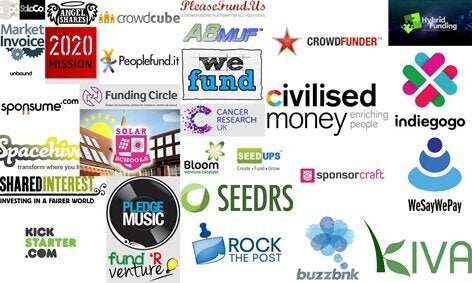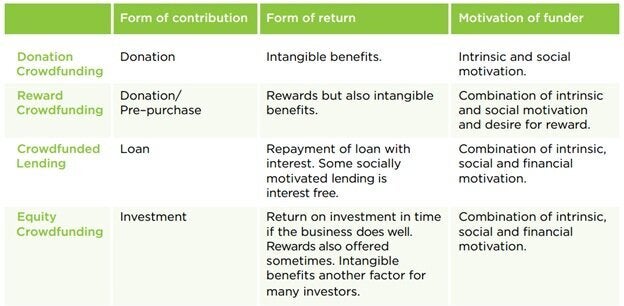Pebble watch, this week signalled the beginning of the end of what has been a stunning crowdfunding campaign by shipping their first batch of watches to backers. The poster child of the new funding model raised $10.2m through pledges from almost 70,000 backers in exchange for rewards, 102 times what the initially sought. With average contributions of under $150 the US-based campaign demonstrated the enormous potential of raising smaller amounts from large numbers of individuals. In the UK Nesta estimates that £120m was raised through crowdfunding in 2011 but looking forward the market has the potential to become a far more significant method of finance provision in the coming years.
For those wanting to ride the crowdfunding wave, it is important to realise there are a number of distinct types of the model that have a variety of different uses and involve a very different offer to those seeking to fund through them. This is important to consider given the plethora of sites now facilitating crowdfunding of one sort or another.

Kickstarter's reward model is perhaps the one that has grabbed most headlines where individuals donate small amounts to back a project in the hope of receiving a reward should it come to fruition. Examples range from the pre-purchase campaigns, such as the Pebble watch, where most backers pledged money to get a good in return, to supporting a social project that give you a public thank you in return. While the reward is an incentive to contribute in many cases pledges are driven by an intrinsic or social motivation to make the project a reality.

Equity crowdfunding holds a different prospect; individuals are offered the opportunity to get a small stake in a startup business for a financial contribution. While having a stake in a successful start-up can be extremely valuable, this type of investment also carries large amounts of risk. Failure rates of young businesses are quite high and it is impossible to tell with any certainty what a given businesses chances of success are.
On the other hand there is the case of what is called crowdfunded lending or P2P lending, another distinct category of crowdfunding. While Kickstarter helps to get new projects off the ground, P2P providers such as Funding Circle provide loans to established businesses. Credit scores are used to indicate to borrowers the risk of each individual loan giving lenders a high degree of confidence of whether the loan will be repaid or not. The underpinning of the model by credit scoring is one of the primary reasons it has experienced such growth in recent years and has, as recommended by Nesta been the beneficiary of Government support.
The success of the Pebble watch shows what can be achieved when you catch the zeitgeist with crowdfunding. As this digital phenomenon continues to gather pace it is important that we don't get carried away with just one model. This is an exciting new way for ideas to be funded but for both businesses and investors it's important to look at the range of models on offer and what you are looking to achieve.